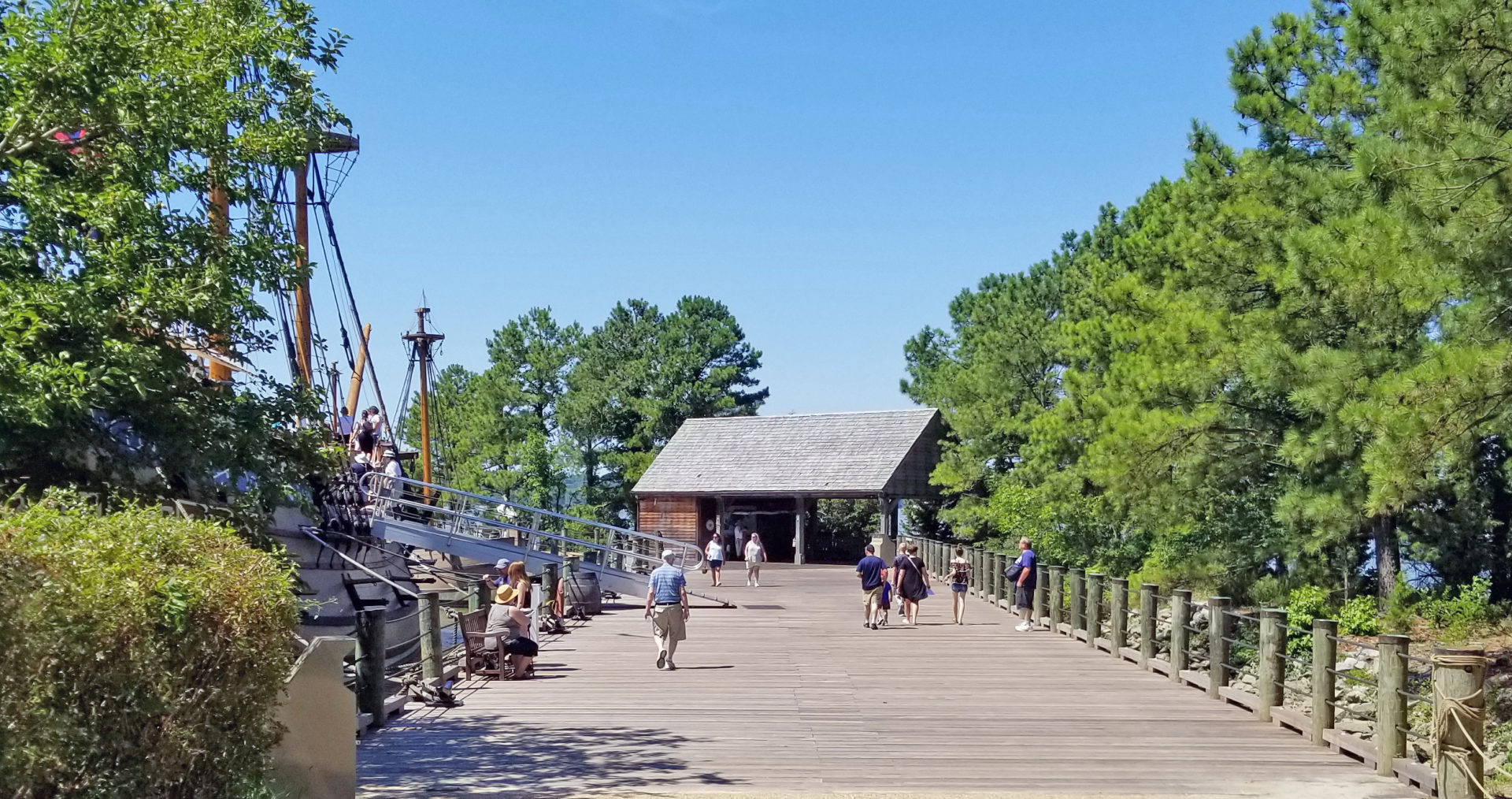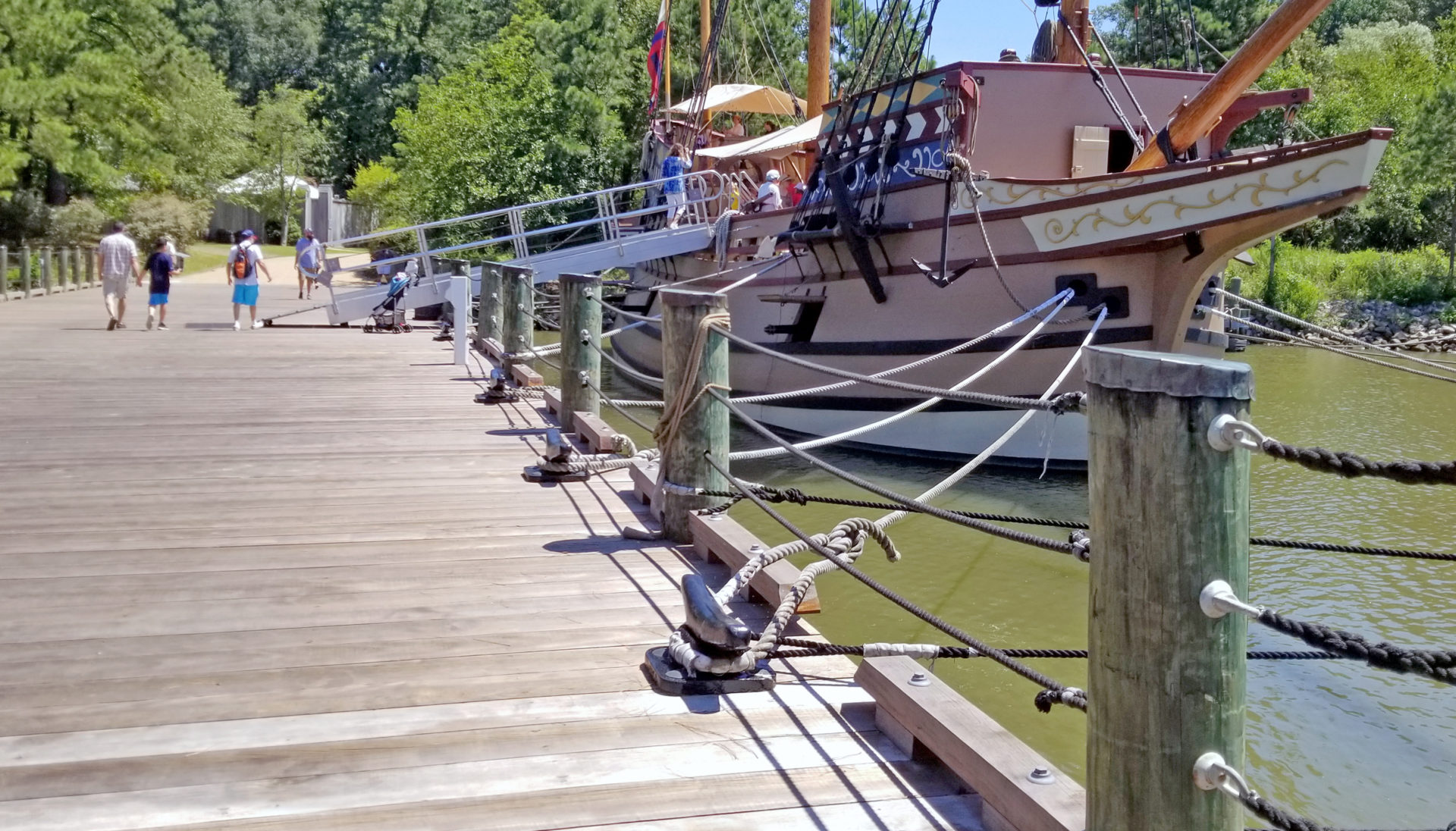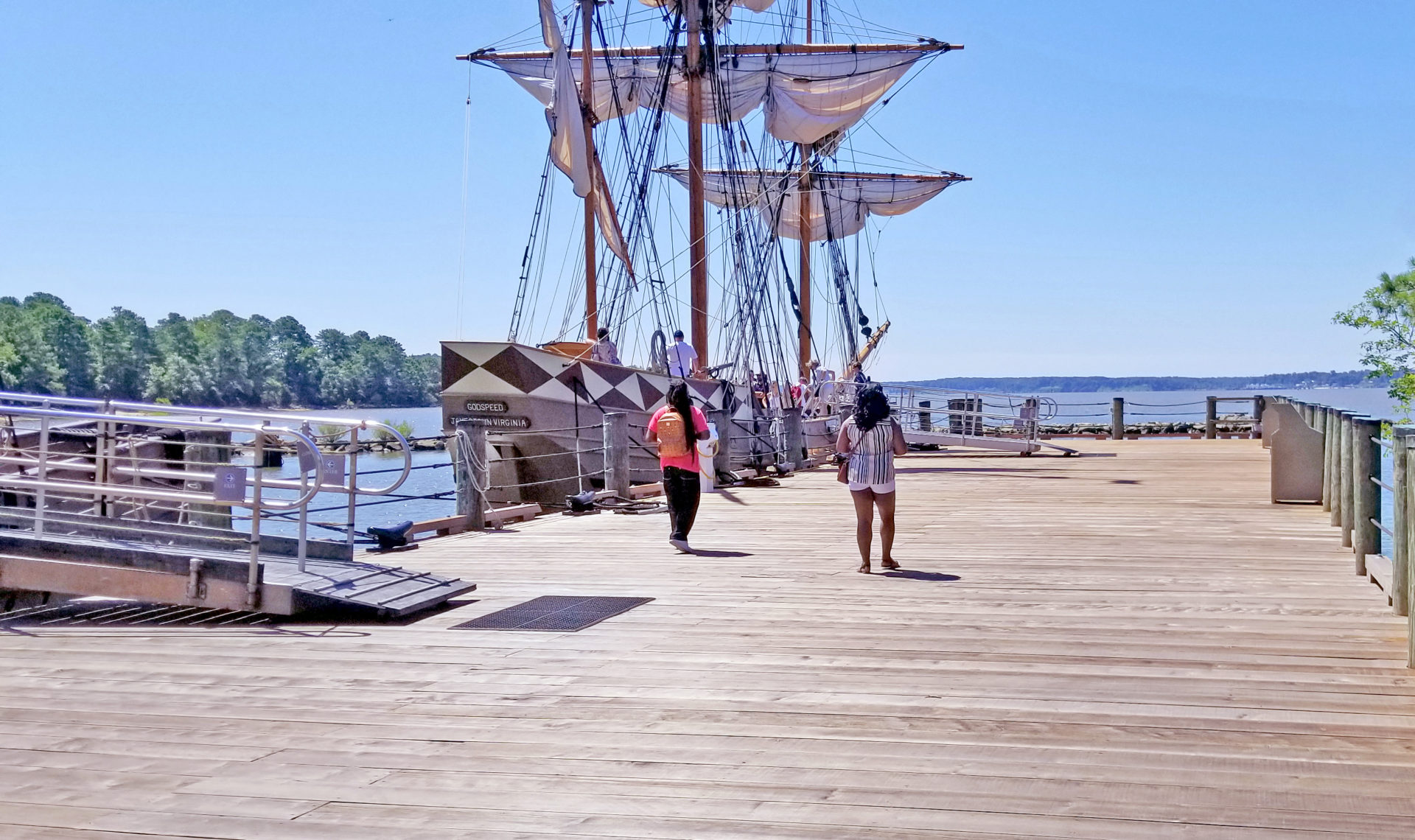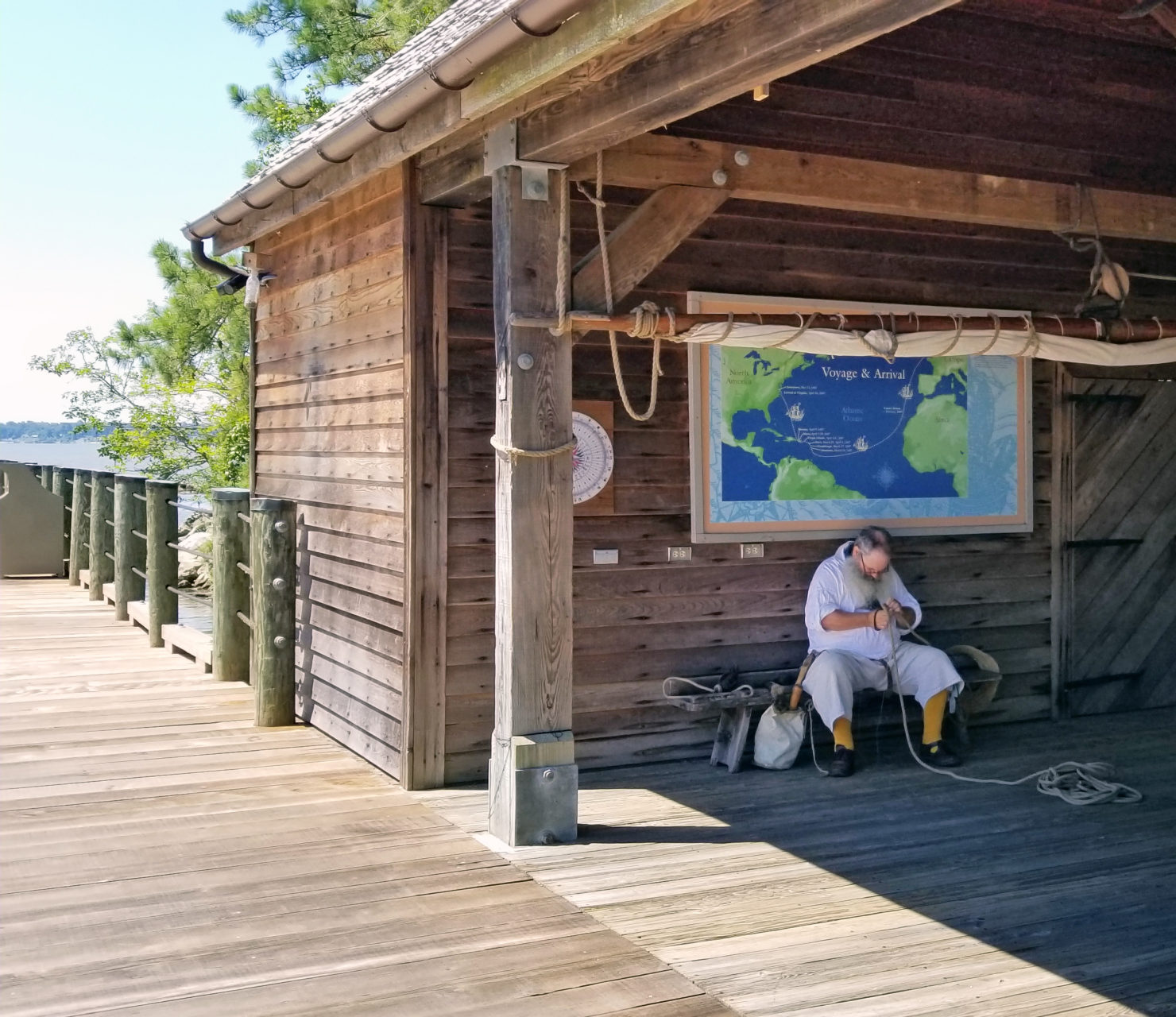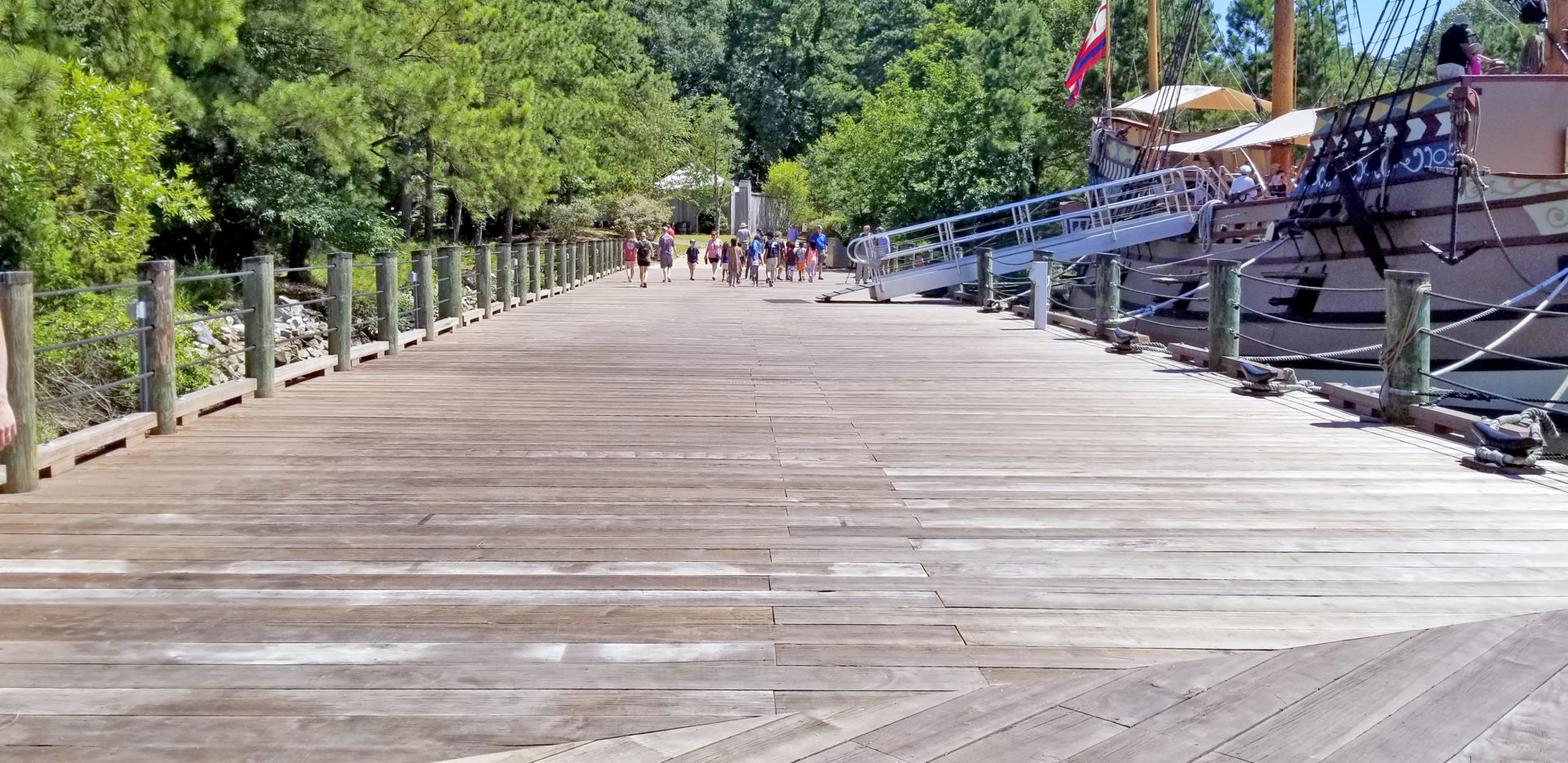A small town with big history, Jamestown, Virginia was the first permanent English settlement in North America, established in 1607. Nearly four centuries later and, while some modernizations have been made, strong efforts to preserve and portray the site’s history are a significant part of the residential culture and economy.
To be fully open and operational during the prime tourist months, the project followed a fast track schedule, successfully completing construction in the winter offseason.
The current replica of Jamestown Settlement Pier, which also houses re-creations of the three ships that sailed from England to Virginia, was built in the 1990s and has remained both a tourist destination and an enjoyable space for live events. The pier condition assessment found that repairs were needed to continue functioning as a high-volume tourist attraction. The team of Clark Nexsen, Hurt & Proffitt, and Crawson Construction worked with the Jamestown Yorktown Foundation to revitalize and repair the 326-linear-foot pier. In line with the historic aesthetic of Jamestown, the pier is composed of timber to resemble an original colonial structure.
Clark Nexsen’s Waterfront team first assessed which beams were damaged and which were salvageable for the new structure. All original pilings remain. For longevity in its marine environment, both the newly installed beams and walkable surface are built out of a dense, tropical hardwood. While the original pier was made of Ipe, this type of wood is not as readily available, which prompted the switch to a green hard timber in order to stay on schedule and account for any last-minute needs. To facilitate walking space, the pier is broad, and features a sheltered area at the end for concerts, social events, and other gatherings. Additional design considerations include accessibility to and from the ships, as well as designated docking areas.
To be fully open and operational during the prime tourist months, the project followed a fast track schedule, successfully completing construction in the winter offseason. During this time, exhibits were kept open, and only portions of the pier were temporarily closed.
